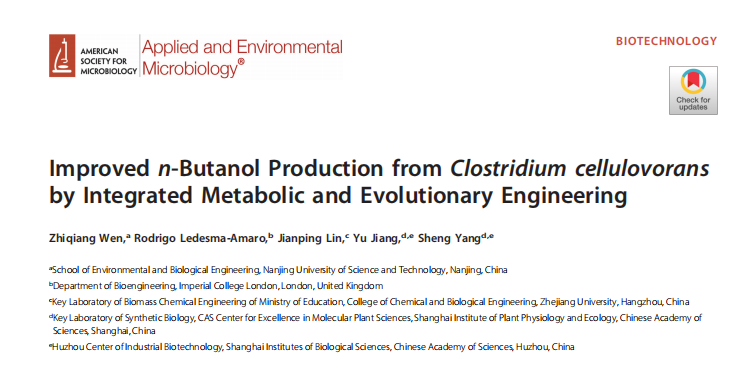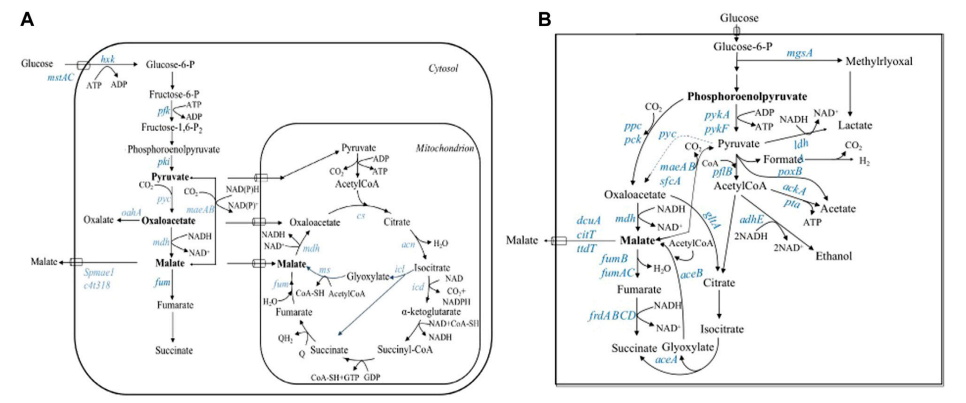
Research background
Paclitaxel is a well-known anti-tumor natural product. Over the past two decades, an important bottleneck in the early biosynthesis of paclitaxel has been the heterologous expression of cytochrome P450 (including paclitadiene 5) in the biosynthesis pathway α- Hydroxylase (T5 α H) Hybridity of multiple products). These byproducts will metabolize from the precursor taxadien-5 of paclitaxel α- Ol transfer, regardless of the heterologous host, previous attempts to reconstruct the biosynthetic pathway of paclitaxel have not produced enough substrates for further characterization.
In this article, the author utilized different expression hosts to detect T5 α H has undergone heterologous characterization, many of which are excessive oxidation of the main single oxidation products (Figure 1). By adjusting T5 α The promoter intensity of H expression and the level of these byproducts decrease, while Taxadien-5 α- The accumulation of ol increased fourfold. This engineering system can reconstruct the six steps of the early biosynthesis pathway of paclitaxel to produce separable 5 α, ten β- Diacetoxy-taxadien-13 α- Ol. In addition, the author demonstrates that the biological pathway of paclitaxel may be a metabolic network rather than a linear pathway. The paclitaxel biosynthesis network indicates that the taxus gene can coordinate and play a role in the biosynthesis production of key early paclitaxel intermediates, and serve as an important basis for discovering other biosynthetic genes.

Result
T5 α Characterization of H oxidation products
The author first transiently expressed T5 in Honji tobacco through Agrobacterium mediated transformation α H. And co expressed with the previously established paclitaxel system. Through gas chromatography-mass spectrometry (GCMS) analysis of leaf extracts, at least 36 oxidation products were observed, including monooxidation, peroxide, and trioxide taxadiene, which were classified based on their mass spectrometry and retention time (Figure 1B). These results are not unique to the plant host system: when TS and T5 α When H was integrated and co expressed on chromosomes in Saccharomyces cerevisiae, the author observed 21 types of oxidized taxadiene. Given T5 α The number of unidentified products produced by H in heterologous systems, and it is not yet clear which compounds are the true precursors of paclitaxel biosynthesis, which compounds may participate in other non paclitaxel biosynthesis pathways, and which are endogenous products produced by heterologous expression.
Therefore, the author purified the oxidation product of taxadiene and identified its structure through large-scale cultivation of Bensom tobacco plants and large-scale cultivation of Saccharomyces cerevisiae. Based on the structure of the obtained oxidation products, the author speculates that paclitadiene-5 α- Ol (2) is the main precursor for the biosynthesis of paclitaxel. Taxadiene dioxide and trioxide may be caused by T5 α The excessive oxidation of monooxidized taxadiene by H (Figure 2D).

Adjusting T5 α H transcription level prevents excessive oxidation
The additional introduction of downstream biosynthetic enzymes may lead to further complexity of the product, where the intermediate for paclitaxel biosynthesis may only exist as a secondary product. The author speculates that excessive oxidation is caused by overexpression of T5 in Honji tobacco α The oxidative cycle caused by H leads to uncoupling and/or retention of misfolded proteins. Therefore, the author speculates to reduce T5 α The expression level of H may alleviate excessive oxidation and allow for the reconstruction of the next synthesis pathway. To reduce T5 α At the expression level of H, the author identified two weaker constitutive promoters (UBQ10) and (NOS). The author replaced the 35S strong promoter in the pEAQ vector with UBQ10 or NOS promoter and co expressed it with TS. T5 under UBQ10 or NOS promoter α The expression of H greatly inhibited the formation of taxadiene dioxide and trioxide, and taxadiene-5 was observed in the NOS system α- The yield of ol (2) is the highest (Figure 3A). Although weaker promoters reduced the abundance of excessively oxidized taxadiene, the proportion (2/3/4/5) between the four main monooxidized taxadienes remained basically unchanged (Figure 3B). Compared to natural plants, due to T5 α H is incompatible with the microenvironment in its heterologous system and may form monooxidized taxadiene 3-5. In the future, it is necessary to address the issue of incompatible heterologous expressions in order to improve taxadien-5 α- The overall percentage of ol. By adjusting T5 α The expression level of H was achieved by the author: (1) using the NOS promoter to make taxadien-5 α- The yield level of ol (2) increased fourfold (Figure 3A), and (2) reduced the formation of byproducts (Figure 3B), which maximized the reduction of mixed interactions with downstream biosynthetic enzymes.

Reconstruction of the early biosynthesis pathway of paclitaxel
The taxus enzymes involved in the early biosynthesis of paclitaxel have been characterized, and the author attempts to reconstruct the early biosynthesis pathway of paclitaxel by instantaneously co expressing these enzymes in Honji tobacco (Figure 4). To prevent potential excessive oxidation of Taxus chinensis cytochrome P450 under the 35S promoter, all Taxus chinensis P450 were expressed under the NOS promoter.

The metabolic network of the early biosynthesis pathway of paclitaxel
In order to gain a deeper understanding of the substrate preferences of these enzymes and further understand the reaction sequence of this pathway, the author will purify Taxadien-5 α- Ol (2) is fed into the leaves of Honshu tobacco and expresses different TAT and (NOS) T10 β H. DBAT and (NOS) T13 α H. As expected, add TAT, T10 in sequence β H. DBAT and T13 α H. 2 can be transformed into 11-15 (Figure 5), indicating that the accumulation of new products in pathway reconstruction experiments originates from 2. In addition, the author proves that 2 can be TAT or T13 α Direct substrate of H, but not T10 β H (Figure 5), which is different from the previously proposed TAT and T13 α The effect of H on early shunting of the pathway is consistent. 2 by T13 α The mass of the product produced by H oxidation corresponds to paclitadiene-5 α, thirteen α- Glycol (16) (Figure 5), and paclitadiene-5 α- Acetoxy-13 α- Alcohol (18) and Taxadiene-5 α- Acetoxy-10 β, thirteen α- Glycol (20) at T13 α H+TAT and T13 α H+TAT+T10 β Observed in combination H (Figure 5). Taxadien-5 α- Ol-13-one (17), taxadien-5 α- Acetoxy-13 α- One (19) and Taxadien-5 α- Acetoxy-10 β- Ol-13 α- One on T13 α H. T13 α H+TAT and T13 α H+TAT+T10 β Discovered in combination H

Summary
Author’s opinion on T5 α Structural identification of four oxidized taxadiene products of H and confirmation of T5 α Overexpression of H is one of the mechanisms underlying the formation of byproducts.
By using low expression NOS promoters, the problem of excessive oxidation was reduced, and taxadien-5 was reduced α- The accumulation of ol (2) has increased fourfold. This enables the successful reconstruction of TS and T5 in heterologous hosts α H. TAT, T10 β H. DBAT and T13 α The early paclitaxel biosynthesis network of H linked the activities of these enzymes together.
Reconstructed the early biosynthesis pathway of paclitaxel and expressed multiple cytochrome P450 producing separable levels of 14.









